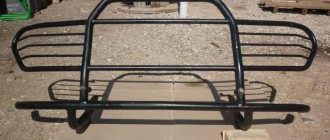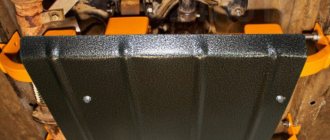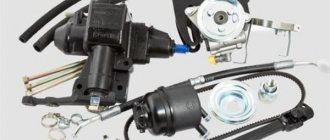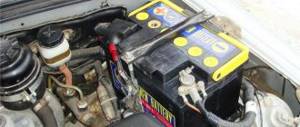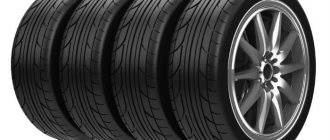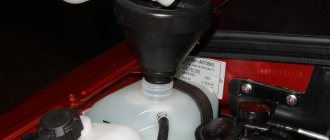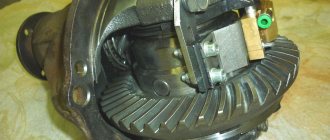Fuel prices have one peculiarity - they are constantly rising. For this reason, people have to look for alternative options to refuel their cars. The hero of our article is the VAZ Chevrolet Niva SUV. This is an all-terrain vehicle with all-wheel drive, so such power requires a large amount of fuel - up to about 15 liters per 100 km.
It is expensive to maintain such a car, so many owners consider such an alternative as installing gas equipment (GBO). This will allow you to refuel not with expensive gasoline, but with propane, which costs half as much. But before you reinstall your car, it’s worth studying the advantages and disadvantages of this system, as well as reviews, tips and recommendations from the owners of such a gas-powered car.
Advantages of HBO
The most important advantage is saving money . It becomes easier to maintain such a machine, and the costs of installing gas equipment quickly pay off. Please note that gas consumption per 100 km is 12-13.5 liters. Tangible savings.
Don't think that installing gas equipment limits your ability to use gasoline. This is not true, you can even switch to another fuel on the go, for example, for faster and better acceleration, switch to gasoline. When traveling long distances, you will only need to refuel once with two types of fuel.
Another advantage of installing gas equipment is the absence of combustion or detonation mode . The high octane rating provides fire resistance so you won't see soot. Based on the opinion of car enthusiasts, after 30 thousand mileage the spark plugs and oil remain clean. The gas burns completely in the cylinders and not at the outlet. At the same time, the engine emits less sulfur and carbon dioxide into the atmosphere.
Niva is far from the most economical car. But there is a way out - supply gas
The Niva is far from the most economical car, and the short-wheelbase version aggravates this disadvantage with its small tank volume. But there is a way out - supply gas
However, gas equipment has as many advantages as disadvantages, but let’s start with the good. First of all, this is a significant reduction in the cost per kilometer. Sometimes double. Secondly, this is an increase in autonomous range - taking into account driving on gasoline, by one and a half times. Thirdly, the engine runs more smoothly, and with an understanding of how to properly use the processes occurring in it, the life of the engine increases. Finally, it's environmentally friendly! After all, we, off-road travelers, are fighting for the environment, aren’t we? The disadvantages, of course, are also significant. The cost of the equipment itself and its installation can reach five hundred euros. The cylinder eats up the useful volume of the trunk or protrudes under the rear overhang. The load from the cylinder itself and gas is added to the rear axle, and this is up to eighty kilograms. If you place the cylinder under the bottom, you also need to change the exhaust pipe - additional expenses, and the ground clearance in the base is slightly reduced. We’ll leave safety issues in the event of an accident and damage on the roads to the paranoid. The bottom line is that Niva with gas equipment has the right to live!
The power mode indicator and switch are built into the center console button block
Since our car has a multipoint injection engine, it was decided to install fourth-generation equipment and hang the gas cylinder under the rear overhang, because trunk volume is very important when traveling. Of course, there is an option to take a cylinder with a smaller volume and diameter and place it, for example, lengthwise. It will contain 35 liters of gas or a little less. This is 200–250 kilometers. It’s quite enough for driving around the city, but you don’t want to depend on the presence of gas stations along the way. In general, as a result of reflection, we chose a fifty-liter cylinder for the rear overhang. It sticks out, of course, but its lower edge is noticeably higher than the bridge, and the elevator will help provide sufficient clearance. In addition, the multivalve faces backwards, and this poses a certain safety problem. Therefore, just in case, we will cover this “direction” with a tow bar. When tests showed that the Jeep Cherokee KJ and Grand Cherokee WJ were vulnerable to rear impact due to the gas tank located there, the manufacturer carried out a service campaign and installed powerful towbars. We will do the same.
So, the cylinder is Russian, the equipment is Italian, the injectors are Dutch. By the way, it’s better not to skimp on injectors. In our case, everything including installation cost twenty-five thousand rubles. Plus replacing the muffler - another three six hundred. Unfortunately, the new exhaust does not have a resonator, so the sound is a little harsh. Well, the can hangs a little low. Again, a suspension lift and larger diameter wheels will help here. The European-type filling valve was placed in the niche of the gas tank flap.
If funds allow, you should choose the best injectors from all available to the installer
The gas valve and reducer interfere with the air intake and it was brought up using a corrugated hose
Immediately after installation, I drove almost one and a half thousand kilometers and checked the consumption of gasoline and gas at the same speed and load using the on-board computer. The result was 13.3 liters of gas at a speed of 120 km/h on the Belarusian section of the M1 highway, where this is allowed. There were two people and twenty kilograms of luggage in the car. Gasoline consumption remained around 12.5 liters per 100 km. Interestingly, when the speed dropped to 90 km/h, the consumption also dropped to 10–11 liters of both gas and gasoline. The transition from one fuel to another occurred automatically and almost always imperceptibly. And only at high speeds does the shift occur with a slight jerk.
A few words about engine wear and why it is important. The octane number of a propane-butane mixture is approximately 100–105. This means that the gas burns in the cylinder much slower than gasoline. Detonation is practically impossible, the engine runs quieter and softer. By the way, winter gas, which contains more propane, burns a little faster, summer gas – slower. This is if the gas is really winter... So, if you keep the engine speed above 4000 for a long time, then the mixture does not have time to burn completely and is burned out in the exhaust pipe. This leads to overheating of the exhaust valves, cracked seats and other similar troubles. Not right away, not always, but things like this happen. Modern systems are configured so that after 4000–4500 rpm they automatically switch power to gasoline. For example, this is useful during long overtaking situations. Otherwise, considering that the “crocodile” VAZ-2131 cannot match the laurels of the Subaru WRX, you have to switch to the third one. If your system doesn’t work like that, just don’t keep the revs above four thousand for long.
Average gas consumption of a car with two people and 50 kilograms of cargo at a cruising speed of 110 km/h
After a certain period of operation, I can say that the decision to supply gas was absolutely correct. The installation has long paid for itself, there are plenty of gas stations on any highway, the cost of a kilometer with an average consumption of 11.5 liters of gas per hundred is approximately 1.85 rubles versus almost four for gasoline. The total mileage with full tanks and a canister in the trunk exceeds 1200 km. The clearance under the tank exceeds 350 mm. You can travel!
The gas cylinder itself is made of 4 mm steel and can withstand very serious impacts. As a kind of protection, a longitudinal towbar pipe is sometimes used, which is launched from below. We are not afraid of either the road or the off-road!
When driving a VAZ-2131, it’s nice to realize that you are part of history, practically a living exhibit.
Disadvantages of HBO
Keep in mind that installing such equipment is not cheap . You will have to spend at least 17.5 thousand rubles. However, after a few months the costs will be fully recouped. Do not skimp on the work of specialists, as modern equipment will be problematic to install and configure yourself.
The next disadvantage is the popping noise that you will feel if you have any problems with the engine . In the intake manifold, the air flow mixes with gas, which causes a mini-explosion. This will not happen when installing a 4th generation system.
You will not be able to completely give up gasoline without burning out the electric fuel pump if there is no corresponding switch. The gas has a different composition and needs to be heated before use. Therefore, in the cold season, it is unlikely that you will be able to start right away with an LPG: you will have to start and warm up the car on gasoline. Gas freezes when interacting with air: this can happen not only during cold periods, but also in summer. In order for the gas to heat up, you need an evaporator reducer, which is heated with hot antifreeze, it allows the gas not to freeze and mix with air.
If there is a problem, it will be more difficult for you to determine the cause , since the problem may be related to one of the types of fuel. Installed equipment takes up a lot of space, so it can limit your access to the parts you need.
The reinstallation must be registered in the registration certificate , since the installation of gas equipment is a re-equipment of vehicles. Therefore, it is better to have the installation done at a specified service station - if you have a new car, in this case you will not lose the warranty. The registration must be completed at the traffic police department.
Types and generations of gas equipment for Chevrolet Niva
Generations of gas equipment were mentioned several times above in the article. There are 5 of them in total, but mainly the 2nd and 4th ones are installed . The 2nd generation equipment is multifunctional; it is installed on cars that have a difference in the way the air-fuel mixture is formed, that is, with a carburetor, where fuel is supplied and mixed with air purely mechanically, and an injection engine, where fuel is supplied under pressure through special nozzles. With this system, you can manually adjust the mixture composition.
The fourth generation is more modern - gas is injected directly into the cylinders. HBO-4 has a special control unit that receives commands from the ECU.
We decide on the generation of gas equipment and the manufacturer
HBO generations (from 1 to 6)
- Vacuum reducer. He directs the gas into the mixer. And the intake manifold opens the vacuum.
- Electronic gearbox. The solenoid valve supplies fuel. It fires when ignited.
- Electronic gearbox with feedback. According to the principle of operation, the circuit is similar to the lambda probe control system. The gearbox operates using a reverse clap system. This is fraught with damage.
- Controlled fuel supply is carried out using electromagnetic injectors.
- Gas equipment on Niva supplies fuel to the cylinders in liquid form. It is expensive, wears out quickly, and therefore is not very popular.
- Equipped to work with gas and gasoline fuels. The gas is supplied in the liquid phase. Such models soon wear out and require high-quality gas and constant maintenance.
You might be interested >> How to install HBO on a Gazelle
Manufacturer's choice
The injection device suitable for this machine is GIG (Gas Injector Gromyko). Its special feature is one gas injector. The GIG system regulates, starts, and shuts down systems using special software.
Russian manufacturers produce decent HBO kits for Niva GIG 3, GIG 3 DL. GIG 3 DL does not require installation of an additional emulator.
Niva HBO is presented in a large assortment. Car owners are often recommended to take a GIG 3 DL or an imported electronic ejector system.
Attention: any generation of HBO will fit any Niva. But if the Niva has an injection engine, then it is better to install a GIG with a single injector. In total, the GIG 3 DL, or imported electronic ejector system, is not particularly different from other gas equipment. Its only advantage is quick payback.
Features of installation of gas equipment
The trunk of the Chevrolet Niva is large; there is no spare wheel, which frees up space accordingly. The first thing you need to decide is the type of gas cylinder, cylindrical or toroidal . The first option is classic, it is installed either in the trunk or under the bottom.
By installing a cylinder in the trunk, you take up a lot of space, but you don’t have to redo the design of the towbar and muffler . To convert the muffler, you will need to install a curved pipe that will run under the cylinder. As for the towbar, you will have to remove one plate (it will interfere with the installation of the cylinder) and make an additional fastening.
Another type of cylinder is toroidal. Many consider this option to be the most optimal, since the cylinder is installed in the place where the spare tire should have been, and has the same round shape. The volume of such a cylinder is about 50 liters.
Installation and maintenance of gas equipment on Niva Chevrolet
When installing gas equipment, pay attention to gas lines . Today, car enthusiasts are increasingly choosing plastic over copper. This is due to the fact that sooner or later oxides form inside the tube, due to which the permeability deteriorates, and the filters also suffer.
The work algorithm is as follows:
- Install a gearbox that is attached to the body, not to the engine. Provide access to it.
- Connect the equipment to the SOD , make an outlet for the high pressure line and connect the fitting to the airless space.
- Connect the pipe , carefully drilling so that the new gas injectors are positioned correctly.
- In the opening, apply a thread , which is best lubricated with a sealant that is resistant to high temperatures.
- Install a gas ramp that mounts on top of the intake manifold.
- Extend the gas supply path from the reducer, do not forget about the filter that purifies the gas.
It is better to entrust this work to a professional.
If your system is configured correctly, fuel consumption will be the same as with gasoline . Car maintenance does not change: do not forget to change consumables and oil on time, even if it does not turn black.
The same goes for the gas filter; it should also be changed. Don't be surprised if the filter isn't dirty; change it anyway. Condensation accumulates in the gas reducer, so try to drain it using a special tap. When draining you will see a black mixture, this is normal.
Pros and cons of switching to LPG on Niva
As with any modernization, the advantages and disadvantages of the future system should be taken into account. It is necessary to take into account the economic component, technical difficulties, and changes in the behavior of the car. As a rule, the main advantage of switching to LPG is significant savings on fuel.
But it’s worth switching to gas-cylinder equipment if the car is used actively (approx. 15 thousand km/year) and the engine consumes more than 6 liters. gasoline. Otherwise, the transition to HBO becomes doubtful. Since it will take a long time to pay for the reinstallation and purchasing equipment.
Pros:
- Saving on fuel.
- Less engine wear.
- Maintenance costs are reduced.
- Environmentally friendly fuel.
- The smoothness of the ride is improved.
- Acoustic comfort comes.
- The total mileage increases.
- Increases the service life of spark plugs.
- The engine runs smoother.
Minuses:
- Driving dynamics are slightly reduced.
- A decrease in power is felt.
- It is difficult to predict the fuel balance.
- In summer, the carburetor quickly becomes clogged.
- The load on the cylinder head increases (valves burn out).
Switching to LPG gives an excellent advantage when traveling long distances, as it gives the car enough additional power reserve. With this system, the car travels much longer distances. After all, you can drive part of the way on gas, and when it starts to run out, immediately switch to gasoline. This undoubted advantage will allow you not to refuel with questionable quality gasoline in remote areas throughout the entire journey.
You might be interested >> How to remove HBO from a car with your own hands
Also, the ability to switch from gasoline to gas and vice versa allows the driver to choose the best mode for him. For example, on highways you can choose gasoline, but in a populated area switch the engine to gas (after all, the engine is already losing power).
ICE running on gas operates more stable and quieter than on gasoline. This is explained by the fact that the octane number of gas is approx. 110, which is higher than the octane number of gasoline.
